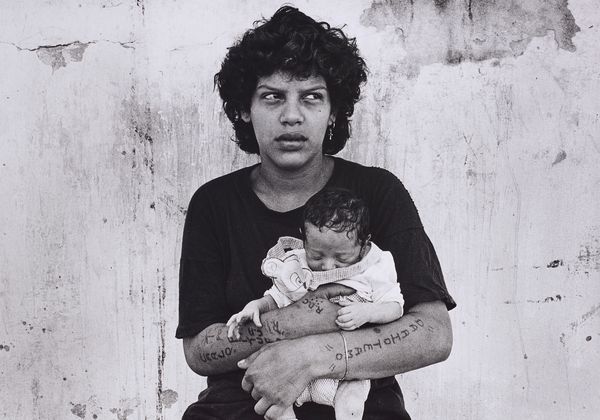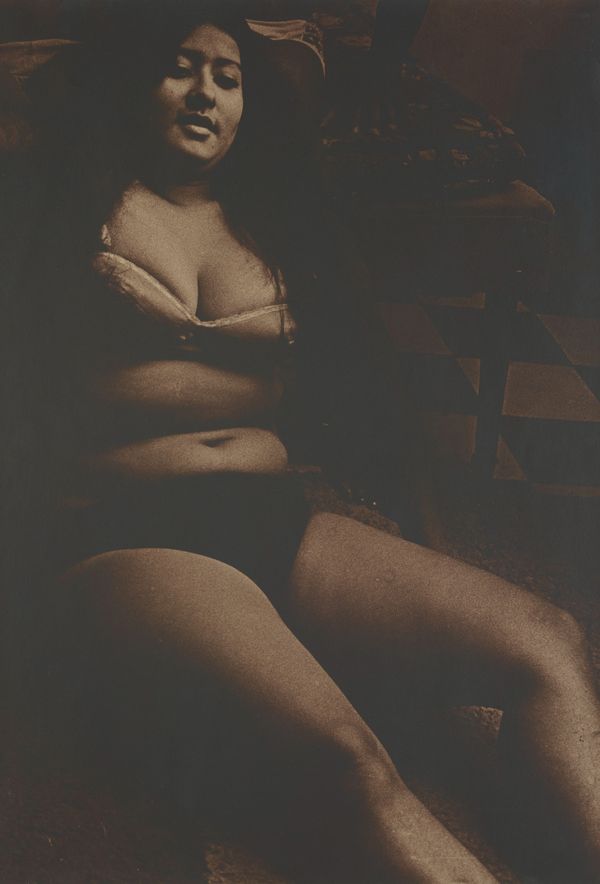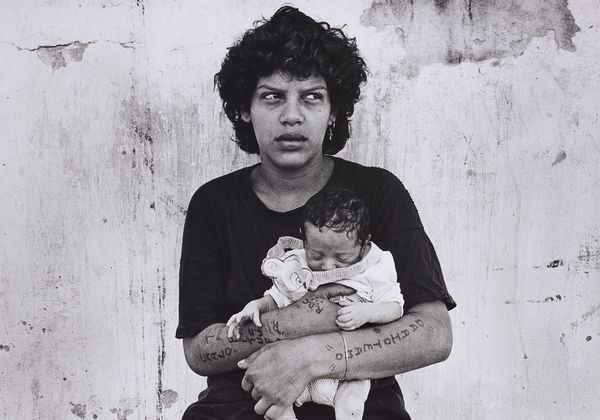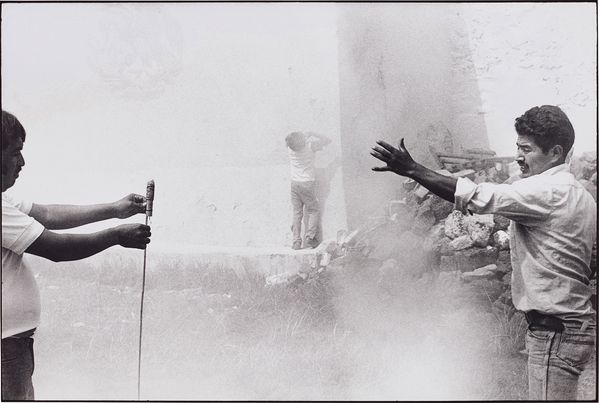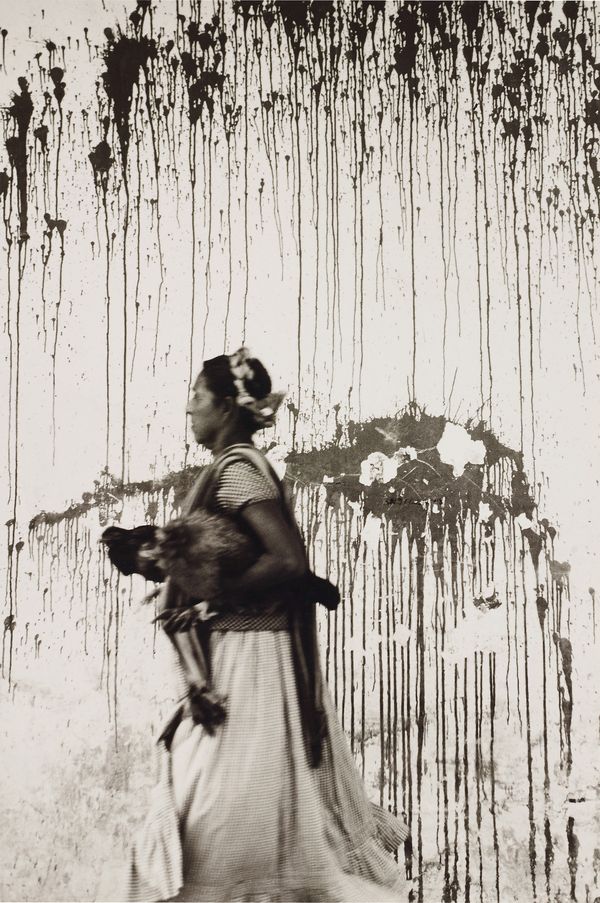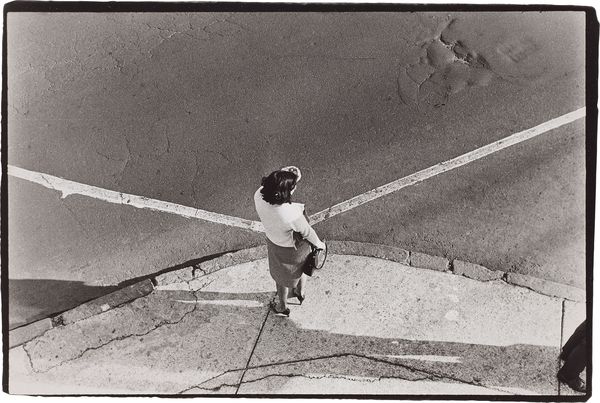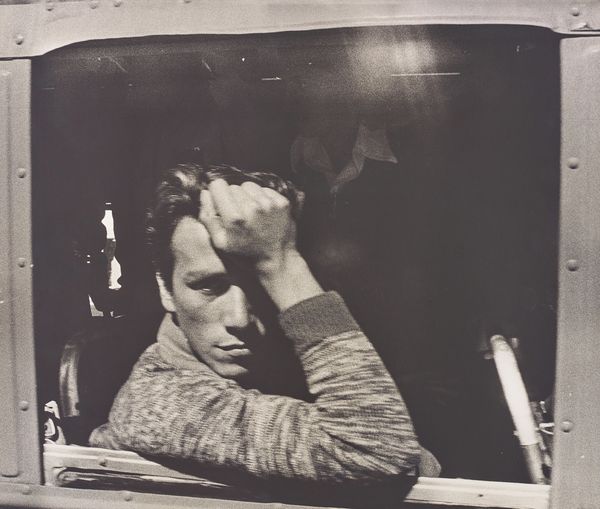ADRIANA LESTIDO Amalia y su Hija from Mujeres presas, 1991-1993
Phillips is proud to present an exceptional selection of works by important Latin American artists, many of whom are appearing at auction for the frst time. These works have been collected over the past 10 years in France and, with the exception of one, are either the prints exhibited or variants from two groundbreaking museum exhibitions – América Latina 1960-2013 at Fondation Cartier, Paris and Museo Amparo, Mexico, and Urbes Mutantes: Latin American Photography 1944-2013 at the International Center of Photography, New York and Museo de Arte del Banco de la República, Bogota – which have brought Latin American photography to the forefront in recent years.
Latin America during the second half of the 20th century was an area fraught with political turmoil, military coups and guerrilla warfare. The 11 photographers featured in this collection come from as far apart as Mexico and Argentina. They differ widely in the manner of their responses to the endemic poverty and social tension in the region, ranging from the photojournalism of Adriana Lestido's Amalia y su Mija, a highly emotive portrait of a female prisoner holding her baby, to Facundo de Zuviria's streetscape Ratio, which delivers a political charge through the very absence of human presence.
Several of the artists find abstraction in everyday life, such as Graciela Iturbide capturing paint dripping down a wall or Sergio Trujillo series of peeling street posters. The contrasts found among these photographers explore their wide ranging depictions of political turmoil, cultural identity and diversity, providing a candid look at photography in Latin America over the past 60 years.
We are excited to offer collectors a unique opportunity to acquire these museum-quality works before the market for Latin American photography unfolds.
FACUNDO DE ZUVIRÍA Ratio from Siesta Argentina, 2003
Facundo de Zuviría's series Siesta Argentina is comprised of images of storefronts in Buenos Aires, drawing attention to the differing patterns found on the building facades. Created in the period following the Argentine crisis at the end of 2001, this series illustrates a city devoid of people and activities during mid-afternoon siesta.
SERGIO TRUJILLO Untitled from Muros Colombianos, 1972-1979
Sergio Trujillo's Muros Colombianos series illustrates the beauty found in debris and captures Columbian society through photographs of torn posters on walls in public places. Trujillo has made several films and has taught photography, design and visual expression at the Universidad Jorge Tadeo Lozano. Since 1983, he has managed Sergio Trujillo Dávila y Cía, designing audiovisual programs in video and multi-image systems.
FERNELL FRANCO Untitled from Prostitutas, 1970-1972
Prostitutas, Fernell Franco's first major series, is comprised of 16 photographs of sex workers in brothels in the port city of Buenaventura. The complete series was first exhibited in March 1972 in his hometown of Cali at Ciudad Solar, and since then, all 16 works have not been shown together. Franco's other projects include Amarrados, Interiores, Billares, Demoliciones and Retratos de ciudad.
ADRIANA LESTIDO Amalia y su Hija from Mujeres presas, 1991-1993
While working as a photojournalist in the 1980s, Adriana Lestido became fascinated by the theme of emotional and affective ties. She attributes her ability to capture fragile moments in her portraits to her impoverished upbringing. She was the first Argentine photographer to be awarded a Guggenheim Fellowship in 1995. In 2007 she ran photography workshops in Ezeiza women's prison. Her work has been exhibited globally, including the Museo Nacional de Bellas Artes; Argentina; the Museum of Fine Arts; Houston; and the Hasselblad Center, Gothenburg.
GRACIELA ITURBIDE Casa de Frida Kahlo, Coyoacán, Mexico, 2005
"I never paint dreams or nightmares. I paint my own reality." –Frida Kahlo
In 2005, Graciela Iturbide was granted a week's access to Frida Kahlo's house in Mexico City where the artist spent most of her life. Immersing herself in Kahlo's private spaces – the bedroom and bathroom particularly – Iturbide documented the rooms and objects left intact and untouched since the painter's death. Iturbide photographed the bath, corsets, artificial limbs and other objects, many of which were blood stained or paint splattered. This portfolio of six dye transfer prints is a record of these everyday objects and places that shaped the painter and her canvases.
One of Mexico's foremost living artists, Graciela Iturbide studied under Manuel Álvarez Bravo at the Centro Universitario de Estudios Cinematográfcos of the Universidad Nacional Autónoma de México and later worked as his assistant. She received the Hasselblad Award in 2008 and has exhibited at the Getty Museum, Los Angeles; the Fundación Mapfre, Madrid; and the Tate Modern, London.
PABLO ORTIZ MONASTERIO Fiesta Nacional, Mexico, 1988
In the 1970s, Pablo Ortiz Monasterio studied photography at Ealing Technical College in London. Since then he has photographed a range of topics from indigenous tribes to fishing communities. He is the co-founder of the Consejo Mexicano de la Fotografía and the Centro de la Imagen and has been featured in solo exhibitions at the Museum of Modern Art, New York; the Palacio de Bella Artes, Mexico City; and the Centro Português de Fotografa, Porto.
GRACIELA ITURBIDE Los pollos, Juchitán, Oaxaca, 1979
One of Mexico's foremost living artists, Graciela Iturbide studied under Manuel Álvarez Bravo at the Centro Universitario de Estudios Cinematográfcos of the Universidad Nacional Autónoma de México and later worked as his assistant. She received the Hasselblad Award in 2008 and has exhibited at the Getty Museum, Los Angeles; the Fundación Mapfre, Madrid; and the Tate Modern, London.
VLADIMIR SERSA Untitled from Letreros que se ven, circa 1979
Vladimir Sersa moved to Venezuela from his native Italy at the age of nine. In the 1970s, he collaborated with the documentary photography collective El Grupo whose motto 'we do not make pretty photos' inspired work that combined criticism and humour. Sersa's series Letreros que se ven [Billboards on Display] was devoted to graffiti, billboards and posters he found in working class Caracas. His book Letreros que se ven was published by Editorial Ateneo de Caracas in 1979.
LÁZARO BLANCO Encrucijada, D.F., 1967
Lázaro Blanco dedicated his life to photography through both his practice and teaching. In his work, Blanco highlights empty spaces by isolating his subjects from their surroundings.
GERTJAN BARTELSMAN Untitled from Los Pasajeros, 1978
Gertjan Bartelsman travelled around Columbia in the 1970s capturing strangers in sombre and refective moments on buses and trains, in bars and at work. These photographs showcase Bartelsman's ability to create intimate images despite the large crowds among which he often finds his subject.
Bartelsman has exhibited internationally, participating twice in the Venice Biennale.
